The transition from summer to autumn is well and truly here. The weather is slowly getting cooler and we’re seeing subtle changes in the garden. It’s such a beautiful time of year and there’s plenty of fun to be had in the fruit and veggie patch! But if you’re not sure what to grow, we’ve got your guide right here for what to grow in autumn in Australia.
Let us help you with your autumn planting guide — whether you’re keen to grow fruits, veggies, herbs or flowers.
Related article: In the garden: How to start a veggie garden
Related article: In the garden: Autumn gardening guide
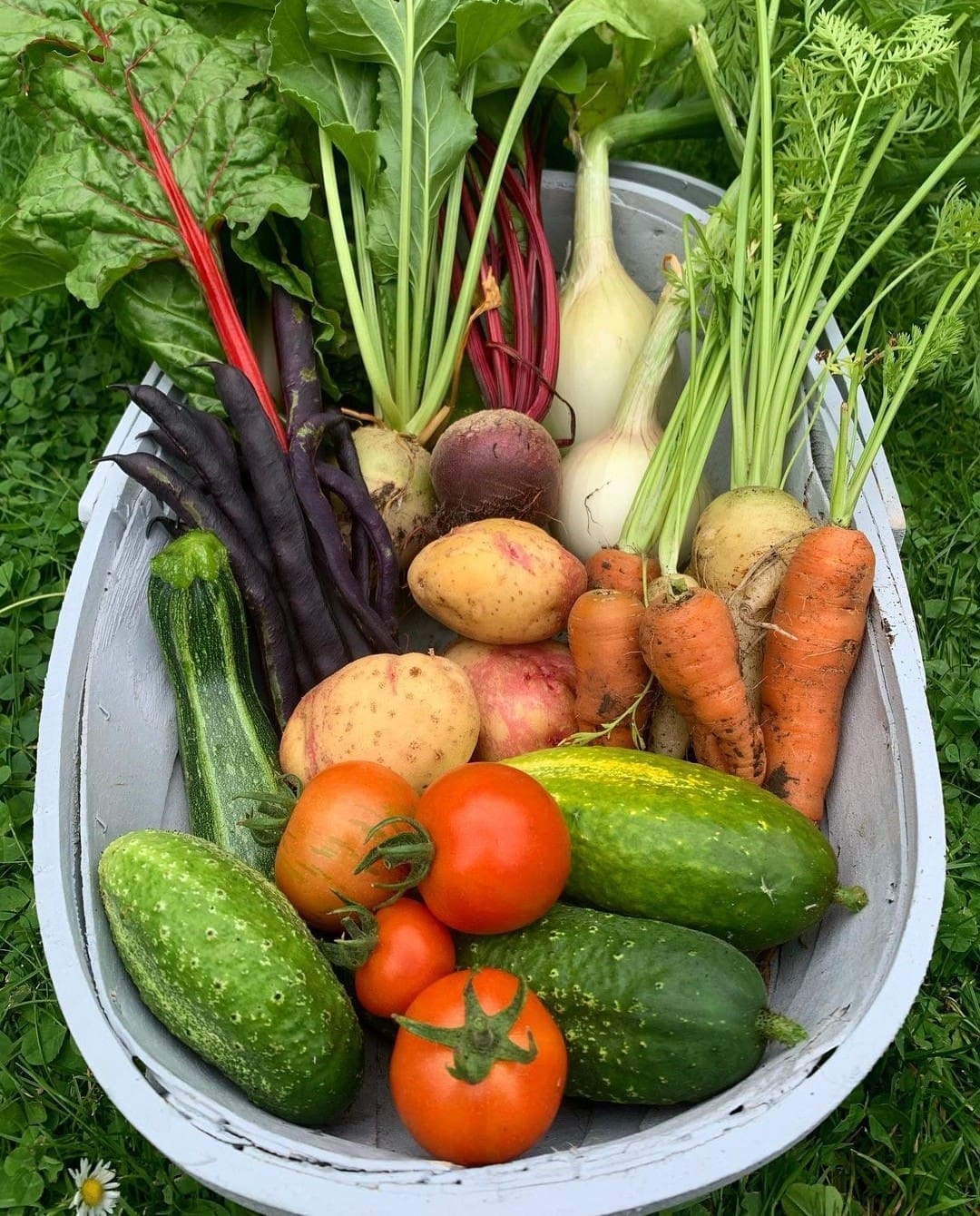
Gardening tips to help get you started
We often think the cooler months aren’t very fruitful (pun totally intended) in the garden. But that is certainly not the case! Autumn is a wonderful time to get stuck into the fruit and veggie garden. The cooler temperature and warm soil — thanks to the summer months — makes it the perfect gardening combo.
A good garden starts with great soil. Give your garden beds a feed of soil improver and fertiliser to give your plants the best start to the season. We have more autumn gardening tips here.
The different climates zones of Australia
This place we call home is pretty big! And it’s diverse. So it’s important to remember that what you grow in autumn really does depend on where you live within Australia. What grows well in one area of Australia may not suit another.
Not sure what your climate zone is? Check out this map that highlights the various climate zones, then keep on scrolling to find out what to grow in autumn in Australia based on where you live.
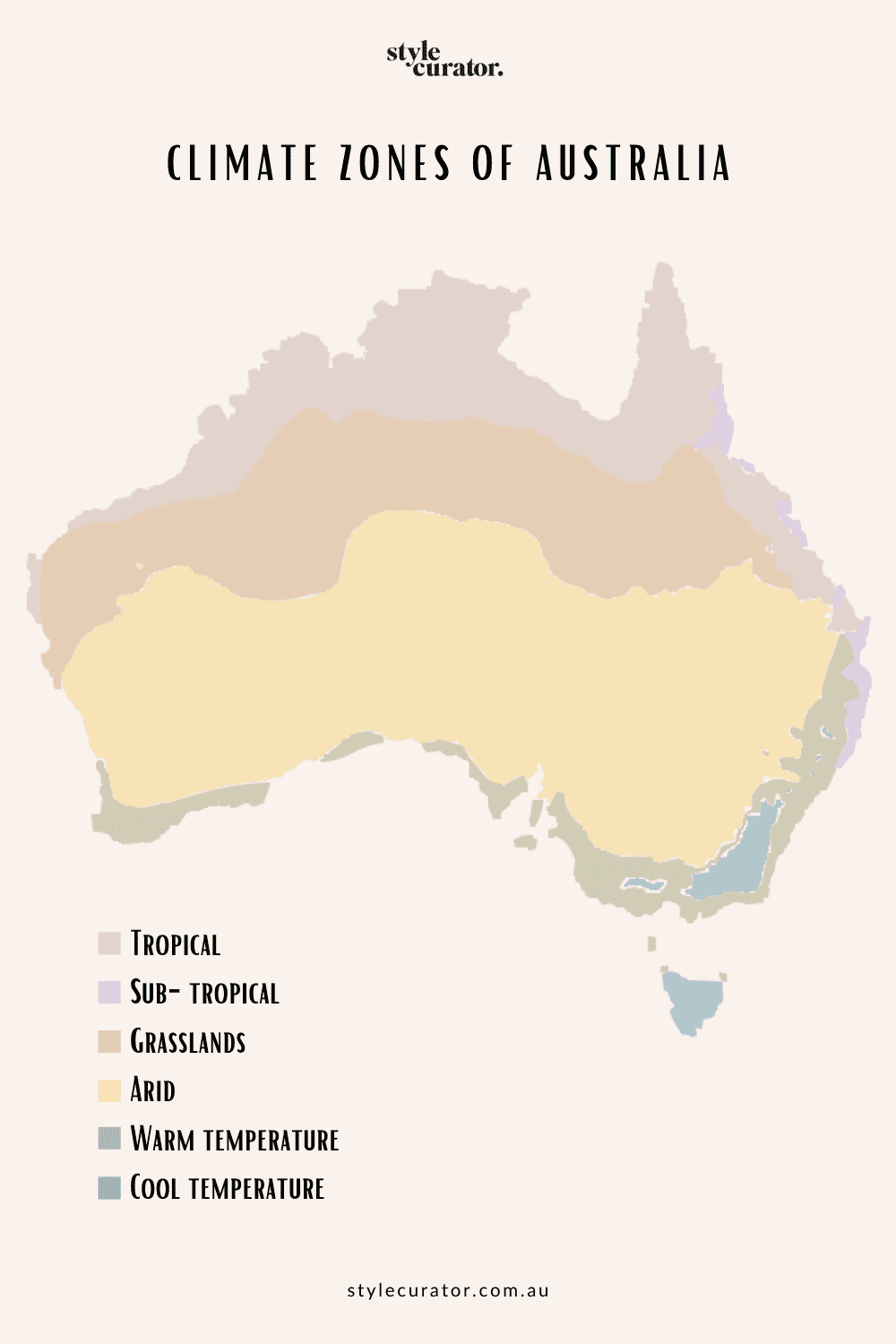
Tropical zone
Tropical zone is known for its hot and humid climate, year round. This zone includes the top east coastline of Australia (Mackay, Townsville, Cairns) sweeps across the top end of Australia (Darwin, Katherine) and goes right across to the top end of the WA coastline (Broome and down to Exmouth).
The best things to plant in a tropical zone in autumn are:
- Artichoke (globe)
- Beans
- Beetroot
- Broccoli
- Cabbage
- Capsicum
- Carrots
- Cauliflower
- Celery
- Chives
- Dill
- Eggplant
- Kale
- Leeks
- Lettuce
- Onion
- Parsnip
- Potato
- Pumpkin
- Radish
- Rocket
- Rockmelon
- Squash
- Sunflowers
- Sweet corn
- Tomatoes
- Watermelon
- Zucchini
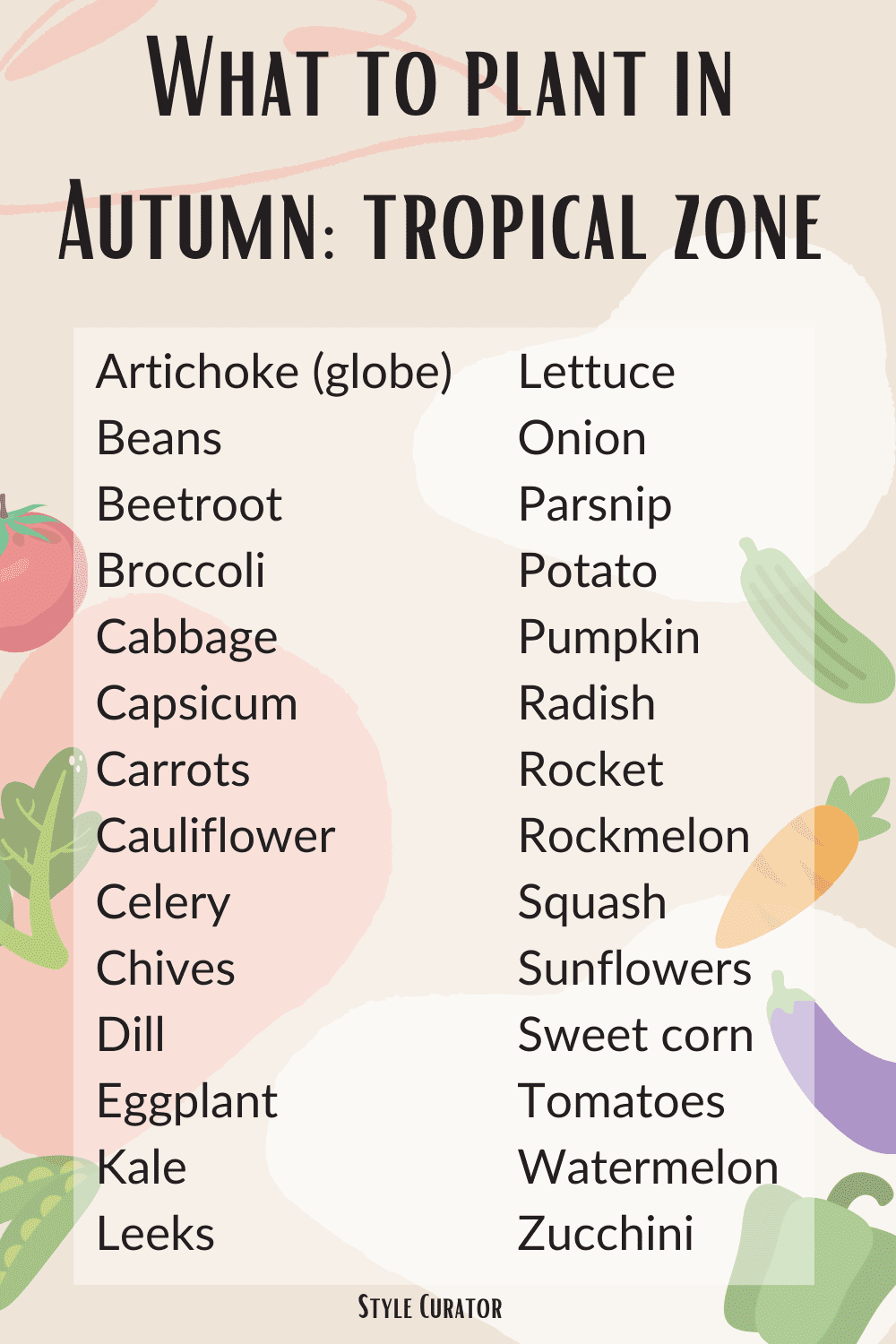
Sub-tropical climate
For our sub-tropical gardeners, there’s an abundance of fabulous, delicious things you can grown in autumn. The sub-tropical regions go from Coffs Harbour, through Brisbane and right up the coast to Rockhampton and Mackay. It also covers the mid-WA coastline.
The best things to plant in a sub-topical zone in autumn are:
- Beetroot
- Broad beans
- Broccoli
- Brussel sprouts
- Capsicum
- Carrots
- Cauliflower
- Celeriac
- Celery
- Chives
- Garlic
- Kale
- Leeks
- Lettuce
- Onion
- Oregano
- Pak choy | Bok choy
- Parsley
- Parsnip
- Peas | Snow peas
- Radish
- Rocket
- Shallots
- Silverbeet
- Spinach
- Sunflowers
- Tomatoes
- Turnips | Swede
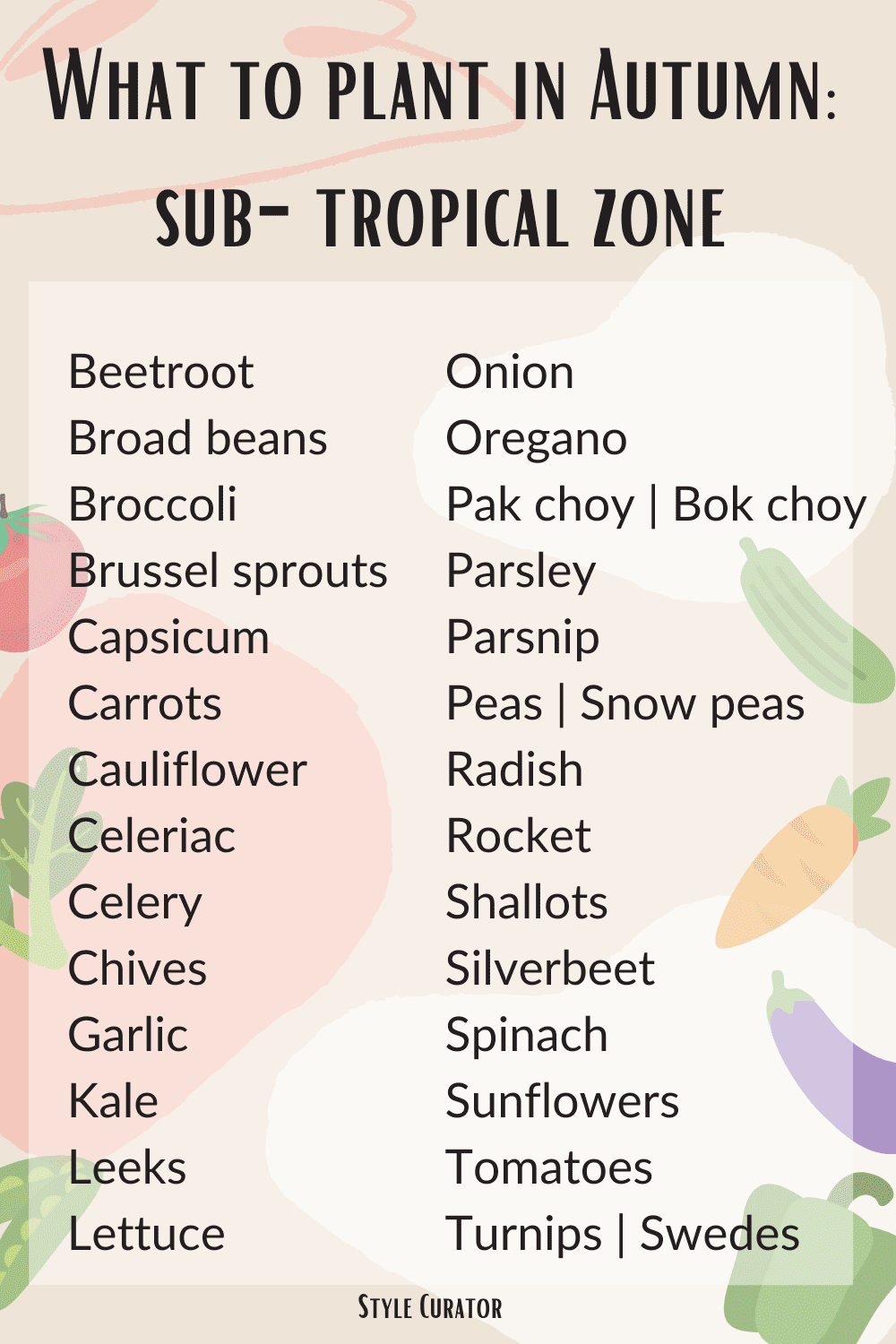
Grasslands zone
The grasslands zone includes in-land Australian cities such as Mt Isa, Tennant Creek and stretches across to the WA coastline. It’s a warm region but still an area where there’s plenty to grow in the garden.
The best things to plant in a grassland zone in autumn are:
- Beans
- Beetroot
- Broccoli
- Brussel sprouts
- Capsicum
- Carrots
- Cauliflower
- Celery
- Cucumber
- Eggplant
- Garlic
- Kale
- Leeks
- Lettuce
- Onion
- Pak choy | Bok choy
- Parsley
- Parsnip
- Peas | Snow peas
- Potato
- Pumpkin
- Rocket
- Squash
- Sunflowers
- Sweet corn
- Sweet potato
- Tomatoes
- Thyme

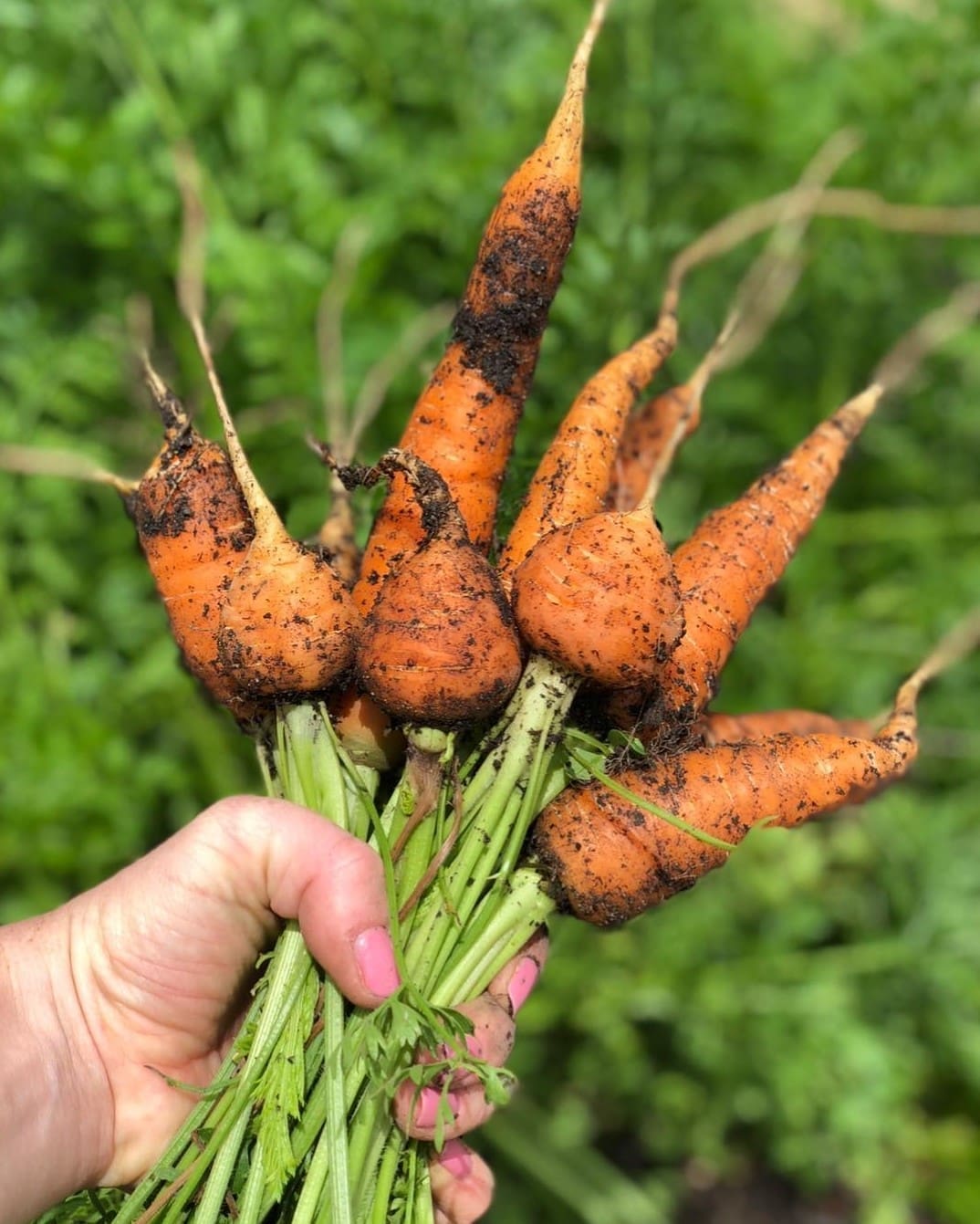

Arid climate
Australia’s biggest region is the arid climate zone. An arid climate has hot, dry summers and cool to warm winters. It covers almost all the inland areas across all states.
The best things to plant in an arid zone in autumn are:
- Broccoli
- Brussel sprouts
- Cabbage
- Capsicum
- Carrot
- Cauliflower
- Celery
- Chives
- Eggplant
- Kale
- Leeks
- Lettuce
- Onion
- Oregano
- Pak choy | Bok choy
- Parsley
- Parsnip
- Peas | Snow peas
- Potato
- Pumpkin
- Radish
- Rocket
- Rockmelon
- Spring onions
- Spinach
- Sunflowers
- Sweet potato
- Tomatoes
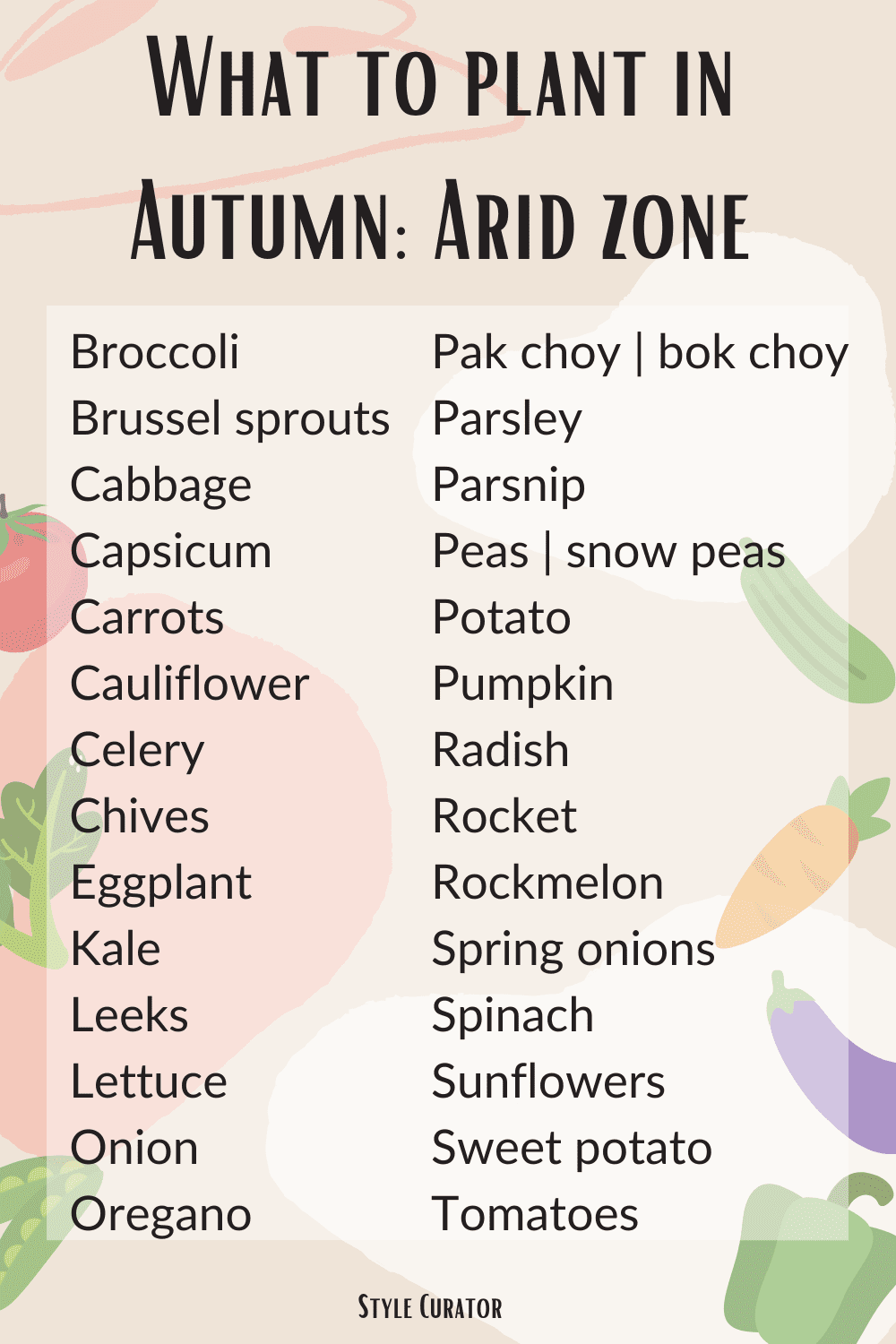
Warm temperature zone
The warm temperate zone includes the New South Wales tablelands and coastline from Sydney. It travels all the way down to Melbourne, across to Adelaide and Perth. It also includes inland Queensland.
The best things to plant in a warm temperature zone in autumn are:
- Artichoke (Jerusalem)
- Beetroot
- Broad beans
- Broccoli
- Brussel sprouts
- Cabbage
- Carrots
- Cauliflower
- Chicory
- Chives
- Garlic
- Kale
- Kohlrabi
- Leeks
- Lettuce
- Onion
- Oregano
- Mustard greens
- Pak choy | Bok choy
- Parsley
- Peas | Snow peas
- Radish
- Rocket
- Salsify
- Shallots
- Silverbeet
- Spinach
- Turnips | Swedes
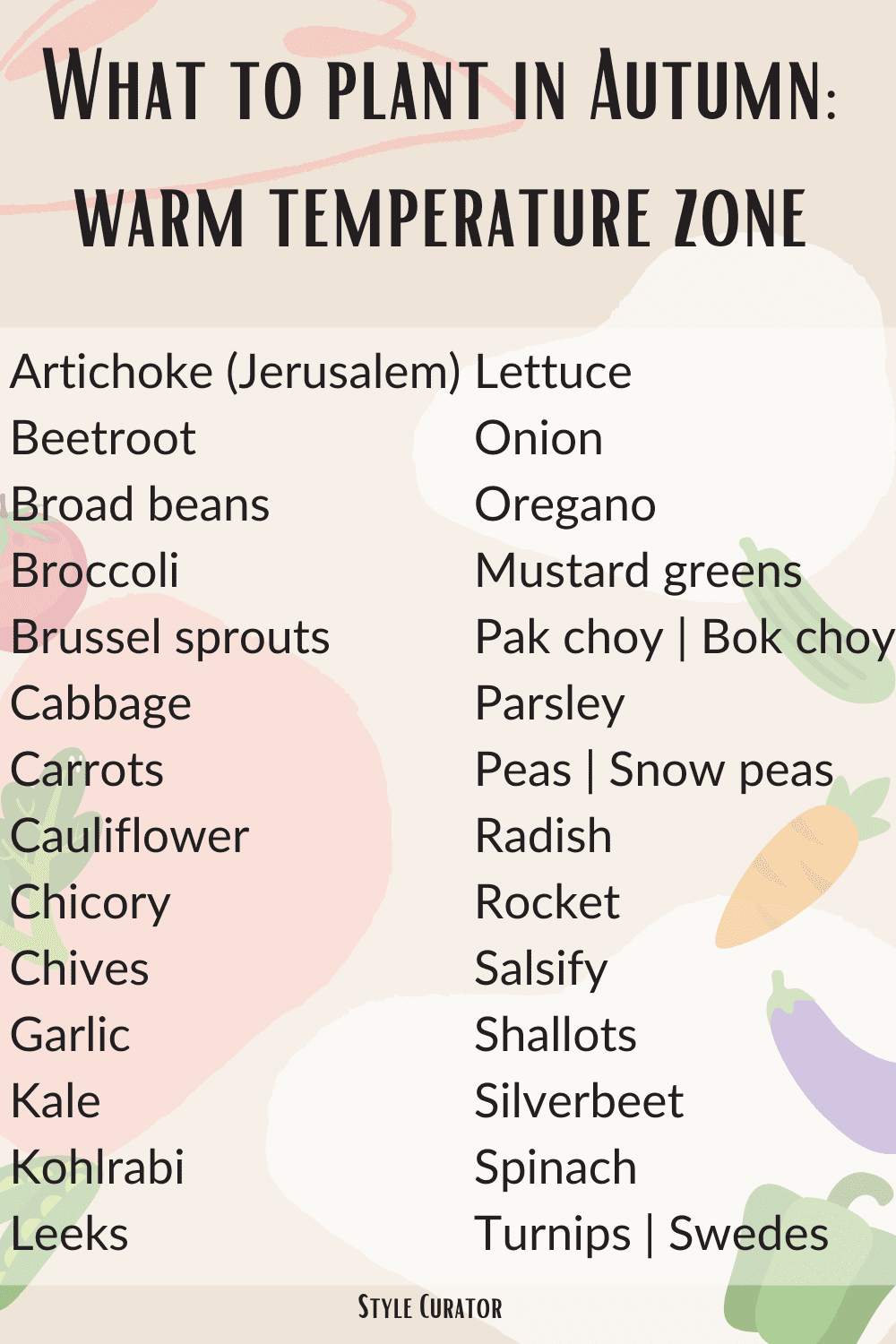
Cool temperature zone
In the cool temperature zone of Australia, it gets… well… cold! These areas include most of Tasmania, the mountain and inland areas of New South Wales and Victoria as well as the tablelands of the ACT.
Don’t be put off by the cold, thinking you won’t be able to get anything to grow. You just have to know what to plant! It’s also recommended to have a shade cloth over leafy greens in case the frost comes early.
The best things to plant in a cool temperature zone in autumn are:
- Asparagus
- Artichoke
- Broad beans
- Broccoli
- Brussel sprouts
- Cabbage
- Carrots
- Cauliflower
- Celery
- Celeriac
- Chicory
- Chives
- Endive | Raddichio
- Florence fennel
- Kale | Collards
- Leeks
- Lettuce
- Mizuna
- Mustard greens
- Onions
- Parsnip
- Parsley
- Pak choy | Bok choy
- Peas
- Radish
- Silverbeet
- Spinach
- Turnips | Swedes
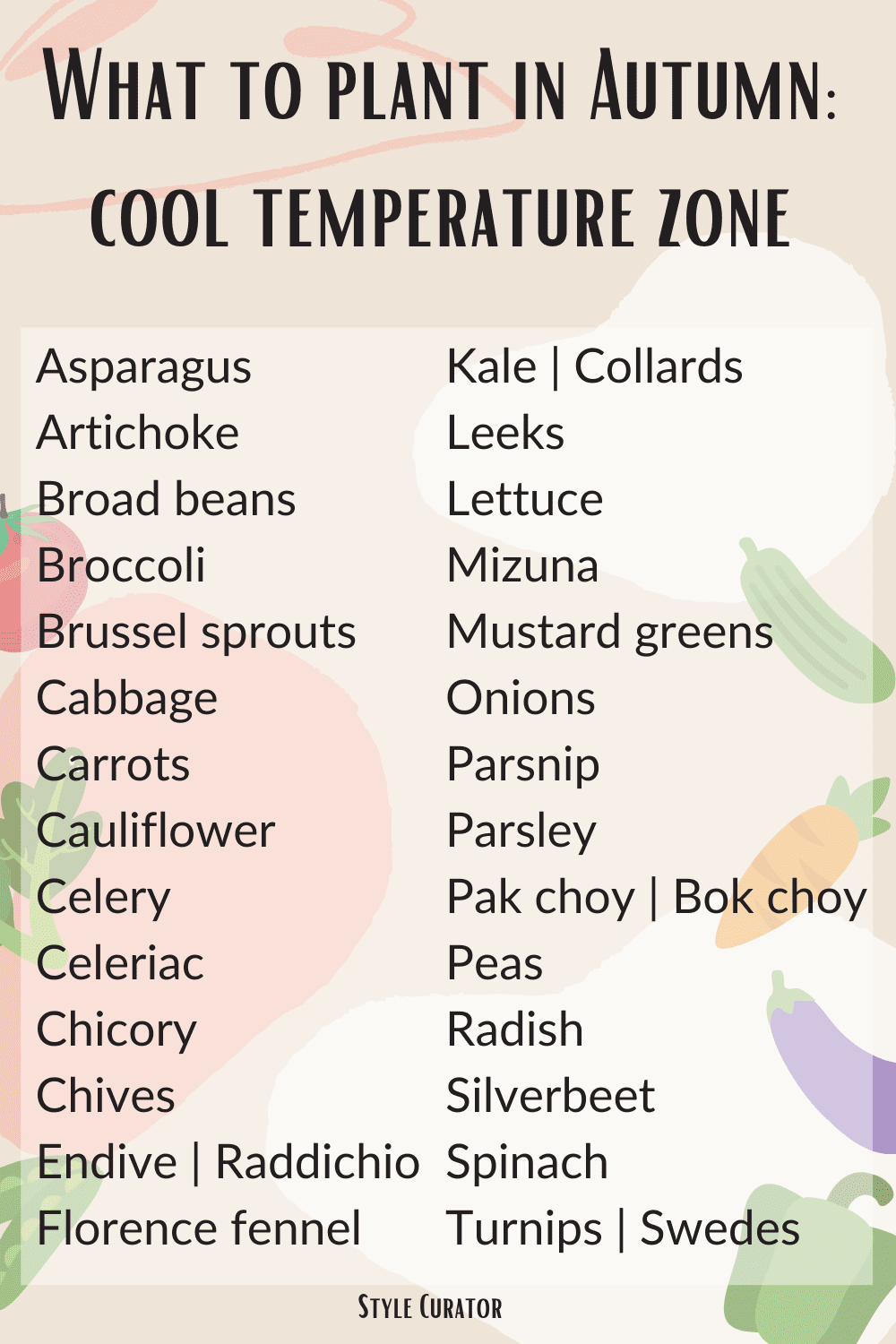
We hope you found this autumn growing guide useful! Growing your own produce and seeing the fruits (or veggies!) of your labour is so rewarding… and delicious! Has this guide of what to grow in autumn in Australia inspired you to get out into the garden?
If you do, we’d love to see — be sure to tag us on Instagram or drop us an email. Or, feel free to share your gardening tips and tricks with us in the comment section below. You can also find more autumn gardening tips on the Biome website. Happy gardening Lovelies!
More gardening tips and advice
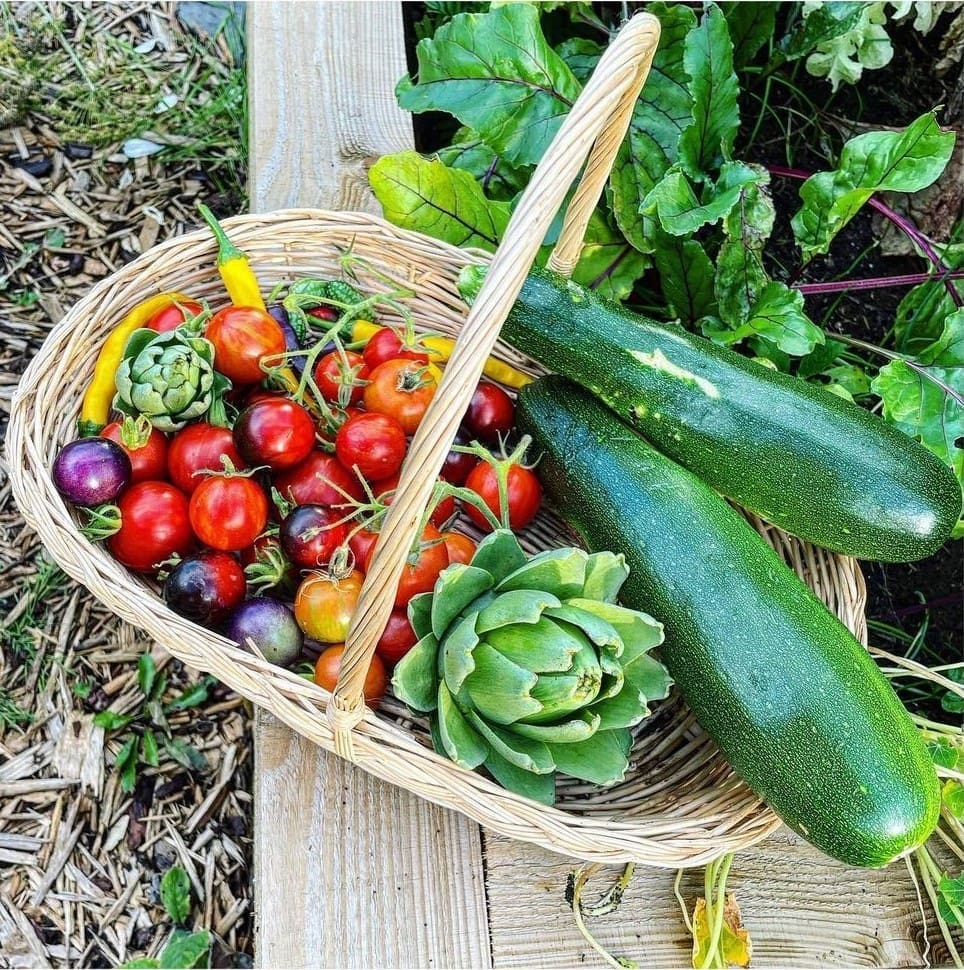
This article was first published in Autumn 2022 and continues to be updated with latest gardening tips.






